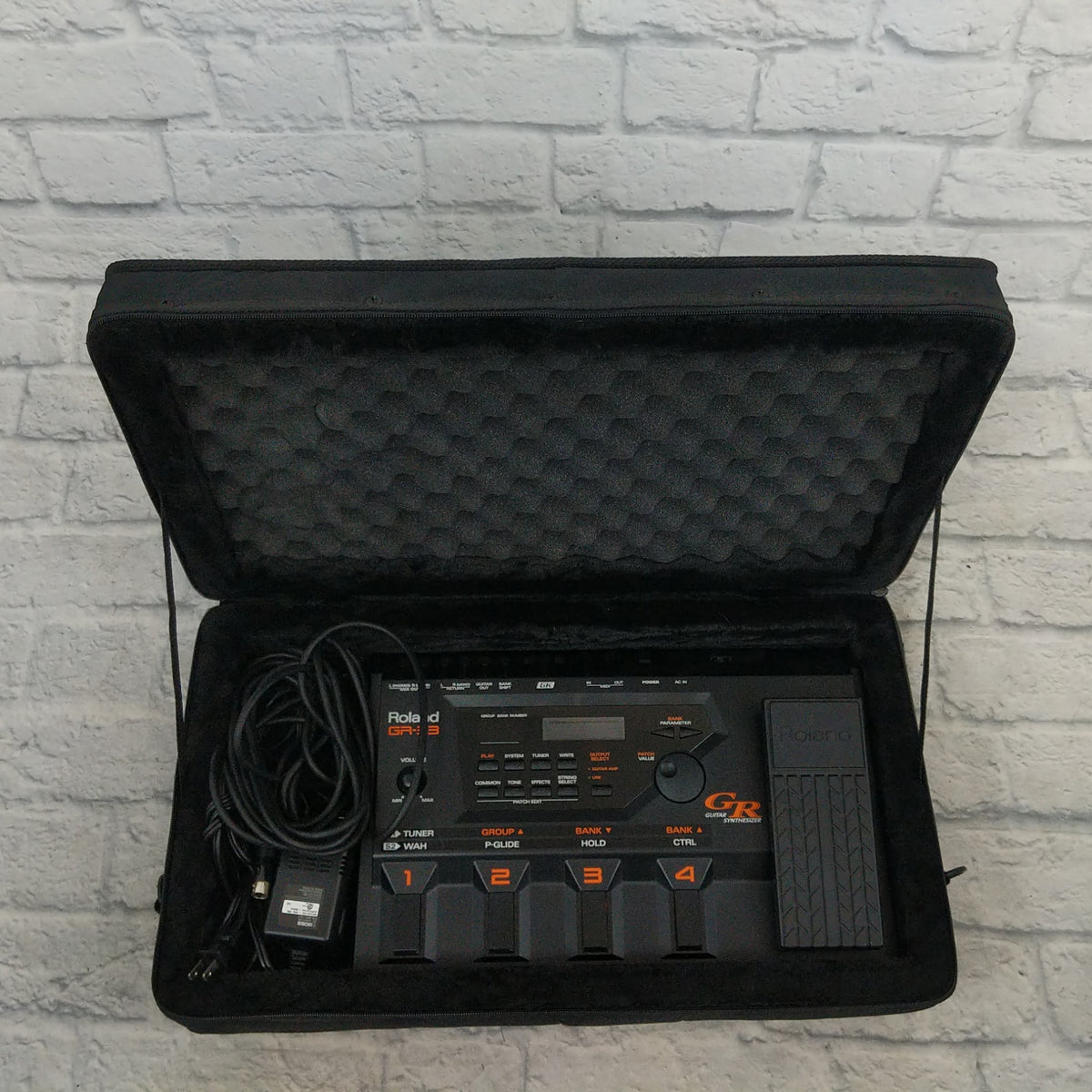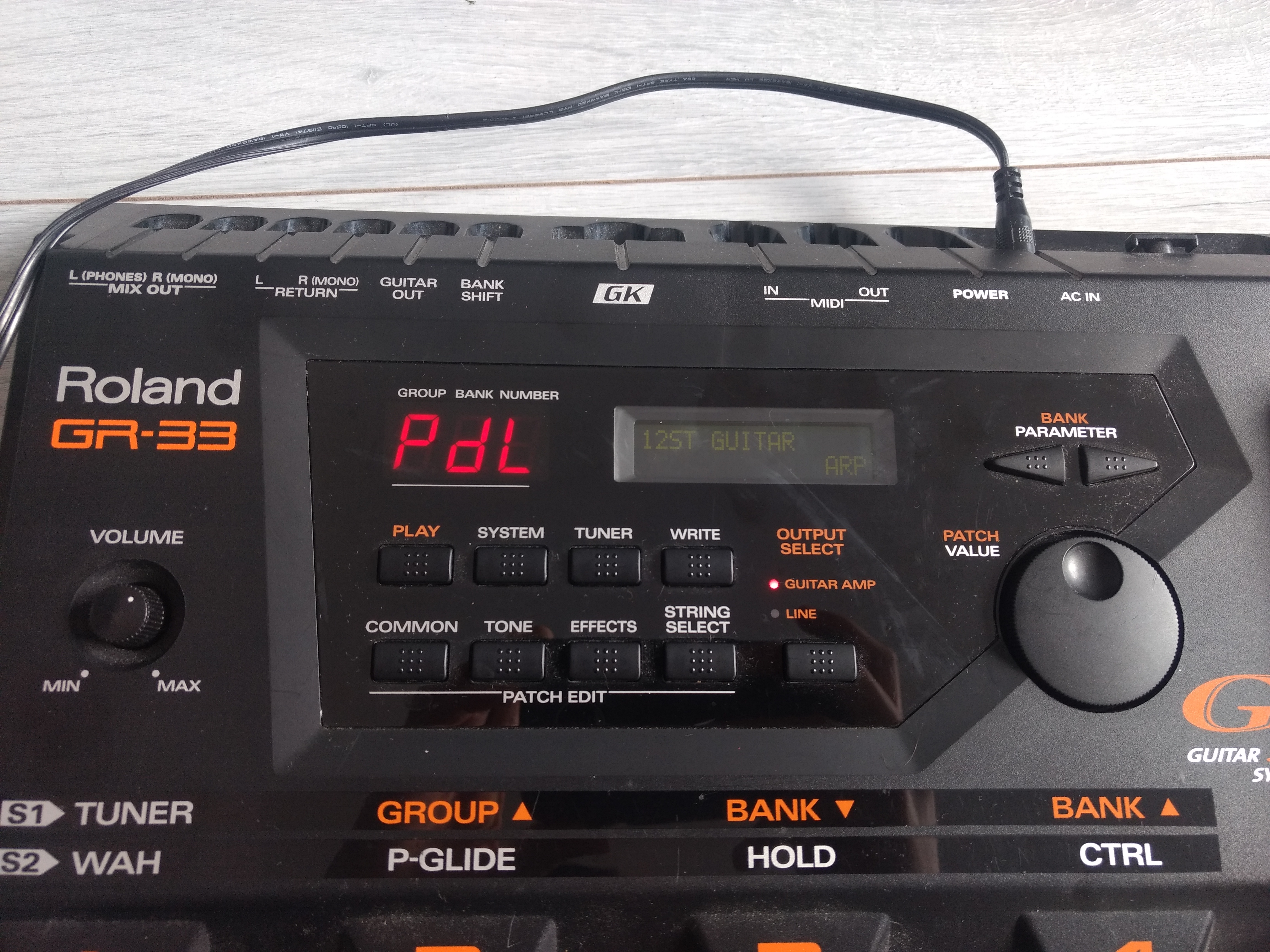
A single 13-pin cable connects the guitar to the GR-55 guitar synth, so there’s no need for a separate guitar cable - you can pick off the regular guitar signal around the back of the GR-55 guitar synth and feed it to your amp in the usual way.
#Roland gr 33 patch editor pro mods
The control box that also houses the cable connector can be fixed under the body strap pin so again no mods are needed. The supplied pickup parts allow for permanent mounting using screws or you can also use adhesive pads, which means you don’t need to modify your valuable guitar.

You can get a GR-55 guitar synth with or without a GK pickup. If you want to play a Pink Floyd epic on your own, this is the box for you. There are also several hold modes that range from holding all the strings to just holding the ones that are playing so that you can continue playing melodies on the remaining strings after pressing the switch. When it comes to time to change chord, you release the switch, play a new chord and then hit hold again. One of the limitations of the guitar, as opposed to a keyboard, is that the notes can’t sustain indefinitely, but it is possible to use the foot control to “hold” the sample-based synth sounds so you can create a sustaining synth pad and then play guitar over the top. You also get a pedal with the GR-55 guitar synth that can be assigned to different functions for each patch, controlling such things as volume, wah, modulation effects and so on. Pedal Versatility…įor my own studio and live work, I have a Roland GR-33 guitar synth and a VG-99 COSM guitar processor, and though each offers more features in its own specialized area than the GR-55 guitar synth, the advantages of combining both technologies in an easy-to-manage package are obvious, not least being simplicity of setup. Then there are Roland compatible guitars from a number of top name guitar builders as well as the Fender® models mentioned, the latest being the GC-1 GK-Ready Strat®. Fitting to Strats and similar guitars is easy - in fact few guitars pose real problems, though I have to concede that a Telecaster with a traditional “ashtray” bridge makes a less than ideal candidate. Listen to more GR-55 sound examples The GR-55 Guitar Synth Requires an Extra Pickup…įortunately, the slim GK pickup system is easy to attach to most guitars, providing there’s space close to the bridge. Alternate tunings and 12-string emulations also need separate string signals as different amounts of pitch shift have to be applied to each string. Once again separate string signals are needed to accurately model the effect of the pickup position on the guitar, especially if it is set at an angle as a Strat bridge pickup is. With Roland’s COSM modeling, however, the process extends to modeling the guitar itself in addition to amps, effects, speakers and so on.

When it comes to COSM modeling, the reason may be slightly less obvious as there are competing products that emulate different amplifiers and effects using a standard guitar with a single output. Critics of “guitar synths”often cite the need for an additional hex pickup, or the use of a guitar already fitted with one (such as the new GC-1 GK-Ready Fender Stratocaster®) as being an unwelcome inconvenience, but in reality neither of these highly sophisticated processes would be possible without it. If you want to fire sampled synth sounds from a guitar, the electronics need to be able to track the pitch of each string quickly and reliably, and the only way to achieve this is to send it a separate signal from each string. One is the fast-tracking, sample-based sound synthesizer section, the other is COSM guitar/amp/effects modeling.

The GR-55 guitar synth combines two of my favorite Roland guitar technologies in a pedal format specifically designed not to intimidate the musician, and I had plenty of time to play with one when I reviewed it for Sound On Sound. (Hint: It’s not about playing drums on your guitar.) Paul White, editor-in-chief of the esteemed Sound on Sound magazine looks at some practical applications of guitar synthesis on the GR-55 guitar synth.


 0 kommentar(er)
0 kommentar(er)
